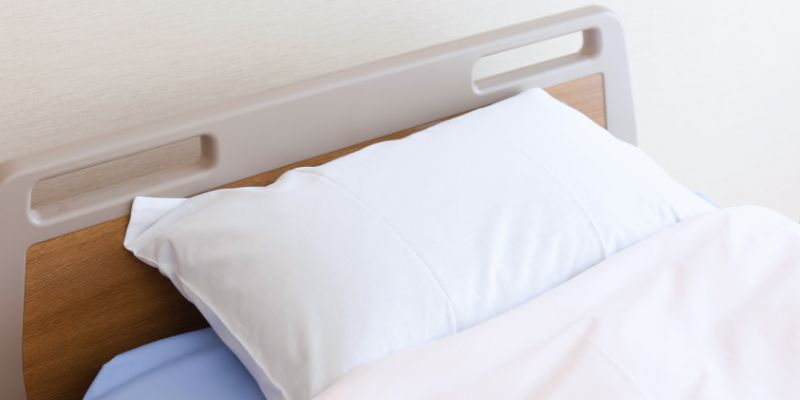Treating Bedsores: Effective Methods for Prevention and Healing
Prolonged pressure on the skin causes painful skin injuries called bedsores, sometimes known as pressure ulcers. Usually affecting those who are immobile or bedridden, bedsores can pose major health risks if untreated neglectfully. Infection prevention and recovery encouragement depend on appropriate care and fast treatment.
This guide will offer sensible advice on whether to consult a professional, steps for preventing bedsores and efficient ways to treat them. A patient's comfort and recuperation will be much enhanced if one knows the causes and follows these suggestions. Whether your role is patient or caregiver, this guidance will enable proper management of bedsores.

Understanding Bedsores and Their Causes:
Bedsores result from extended pressure on the skin, particularly in bony places like hips or elbows. This pressure reduces blood flow, damaging skin and tissues. The disorder might get worse with friction from frequent rubbing or incorrect posture. People who spend a lot of time motionless are more likely to get bedsores.
Inappropriate hydration or nutrition might also slow healing. Sweat or incontinence's moisture promotes skin sensitivity and makes one more susceptible to sores. Minimizing damage requires early identification. Bedsores fall in four stages, from moderate redness (stage one) to serious wounds exposing bones (stage four). Understanding these phases helps one to customize therapy approaches. Understanding these risks and changing lifestyles to prevent continuous pressure on the skin starts with prevention.
Preventive Measures to Avoid Bedsores:
Regular attention and care help prevent bedsores. Immobile patients must be repositioned often to relieve pressure on sensitive areas. Caregivers should turn bedridden people twice for two hours to encourage good circulation. Specialized mattresses or supportive cushions help distribute body weight equally. These instruments help relieve pressure on the hips and the back, two high-stress areas.
Keeping dry and clean skin helps ward against illnesses. To guard the skin against degradation, use mild cleaners and moisture barriers. Steer clear of strong soaps that aggravate delicate areas. Prevention depends much on nutrition and water. A diet high in minerals, vitamins, and proteins helps the skin to repair by strengthening its capacity. Including items like eggs, salmon, and leafy greens guarantees individuals at risk of balanced nutrition.
Home Remedies for Healing Bedsores:
Home cures for mild bedsores can be rather successful. Clean the impacted region using a saline solution to lower infection risks. Saline gently cleans without hurting tissues. Apply prescription ointments or medicated dressings to help heal. Maintaining the covered area helps guard it from further damage. Steer clear of drink-based remedies since they could aggravate the incision.
Renowned for its antibacterial qualities, honey can help with mild sores. Aloe vera gel helps tissue healing and has a cool effect. Make sure the stage of the bedsore calls for any treatment you apply. Check the cut often for indications of healing. See a physician if redness, swelling, or pus lasts. Early action guarantees speedier healing and helps to avoid the aggravation of diseases.
Medical Treatments for Severe Bedsores:
Complications from advanced bedsores require medical attention. Doctors may advise debridement, a technique for eliminating dead tissue and encouraging healing. This can be accomplished either surgically or with enzymatic agents. Another very successful technique is negative pressure wound therapy (NPWT). It draws out fluids using a suction device to lower edema and boost tissue development.
Prescriptions for antibiotics could be for either treating or preventing infections. Severe cases may require surgical reconstruction to seal significant wounds and rebuild skin integrity. Working closely with medical experts guarantees a customized treatment schedule. Frequent follow-ups and adherence to advised treatment can maximize recovery possibilities and reduce future hazards.
Importance of Skin Inspection and Hygiene:
Preventing and controlling bedsores depends critically on daily skin inspection. Look for redness, swelling, or discoloration in high-risk regions, including hips, heels, and elbows. Early identification of symptoms helps to stop more advancement. Using warm water and light soap, gently wash your skin. Steer clear of scrubbing since it can aggravate conditions. After washing, Pat the skin dry and apply a protective barrier cream.
Make sure the patient's linens are spotless and wrinkle-free. On sensitive skin, wrinkles could raise friction and pressure. To keep the skin dry, go for moisture-wicking sheets. Frequent hygienic habits help to lower illness risk. To help skin health, advise patients to keep hydrated and follow a balanced diet. Together with awareness, skin care guarantees a proactive method to control bedsores.

Tips for Caregivers Managing Bedsores
The prevention and treatment of bedsores depend heavily on caregivers. First, learn the right posture methods yourself. Elevate pressure spots and ease strain by using foam pads or cushions. Create a repositioning plan to guarantee constant mobility. Track the patient's skin closely for early pressure sore development. Early addressing of redness helps to avoid complications.
Keep lines of open contact with healthcare professionals. Notify of any changes in the patient's condition immediately so that quick intervention can be demanded. Another vital is emotional support. Patients' conditions could cause them to be depressed. Their path of recovery might benefit from encouragement and consolation. Caregivers should give their well-being top priority. Take breaks and, if necessary, ask for assistance to prevent burnout while handling patient care.
When to Seek Professional Help
Although moderate bedsores are usually treatable at home, some symptoms point to the necessity of expert treatment. Warning indicators of an infection are ongoing redness, swelling, or pus. The patient's fever or chills could point to a systemic infection. Under these circumstances, one needs to get the right medical attention. Additionally needing professional evaluation are bedsores that show no indications of healing following two weeks of appropriate treatment.
Advanced wounds showing muscles or bones call for specific care. Medical professionals could advise diagnostic tests to evaluate the degree of the ailment. Working with doctors guarantees a complete treatment plan catered to the patient's requirements. Timely intervention enhances speedier recovery and helps to avoid problems, therefore increasing the general quality of life of the patient.
Conclusion:
With the proper education and care, bedsores—a preventable and treatable disorder—can be controlled. Implementing preventative actions such as regular repositioning and preserving hygienic conditions is crucial. For mild conditions, home treatments and close observation usually help. To prevent complications, serious bedsores call for quick medical attention. Caregivers should remain alert and give patients emotional as well as physical help. These techniques will help guarantee comfort and speedier recovery for those in danger of bedsores.











